All about zucchini seedlings
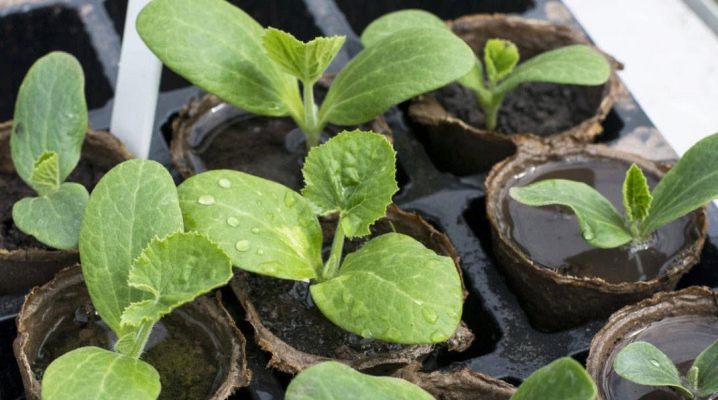
Zucchini is a popular vegetable grown by many gardeners. It is unpretentious in maintenance and is suitable for preparing many dishes. In order for the fruits of this plant to ripen before the onset of cold weather, already grown plants are planted in open ground in cold regions.
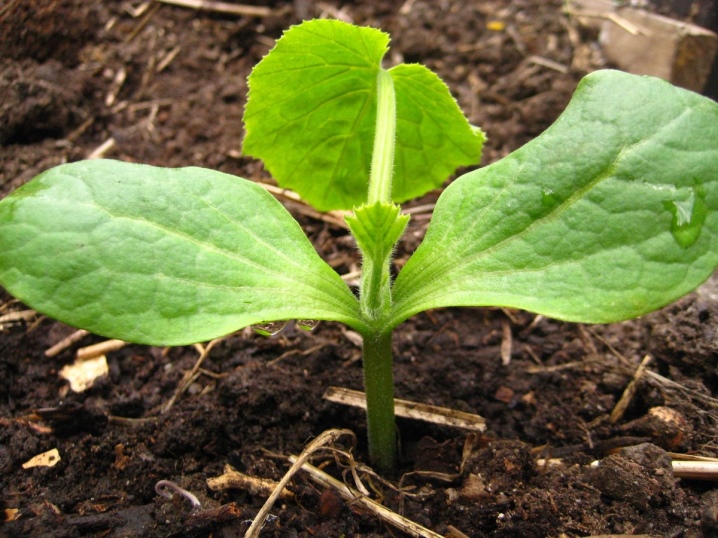
What does it look like?
Zucchini seedlings usually appear 3-6 days after planting seeds in the soil. The foliage that can be seen at this time is in the form of zucchini grains. In the early days, seedlings seem too pale. At this moment, it seems to many gardeners that the plants are too weak, which means that they will not be able to grow and get stronger. But under the rays of the sun, the seedlings quickly turn green.
Young sprouts are very similar to pumpkin seedlings. This is not surprising, because these plants belong to the same species. In the future, the sheets change their shape a little, and the seedlings themselves are pulled up.
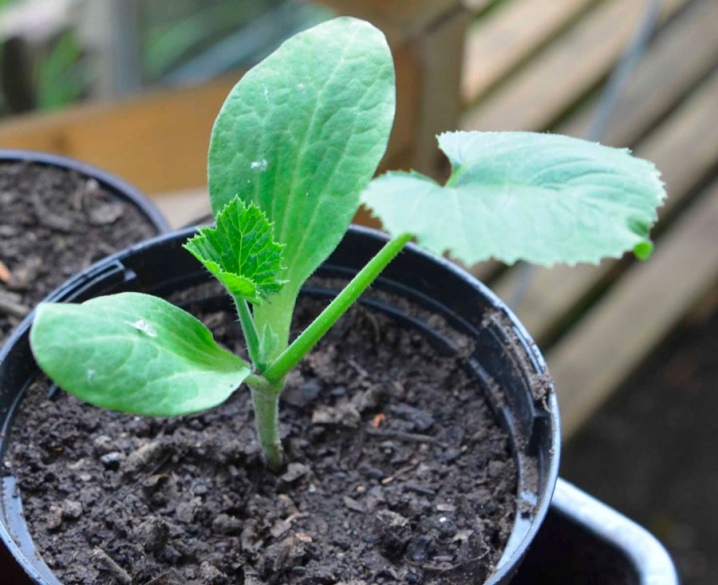
Growing
It is quite simple to grow zucchini seedlings at home. Simple tips from more experienced people will help novice gardeners with this.
Preparation
First you need to prepare seeds, soil and containers in which green seedlings will be grown. There are several ways to plant zucchini seeds.
-
In containers. Many gardeners prefer this method because sowing seeds in a large container is more convenient than in small cups. In addition, it is easier to carry from place to place. The only disadvantage of such a planting is that the plants need a pick. After two weeks, the seedlings are carefully dug out of the ground and transplanted into separate pots. At the same time, gardeners get rid of weak seedlings.
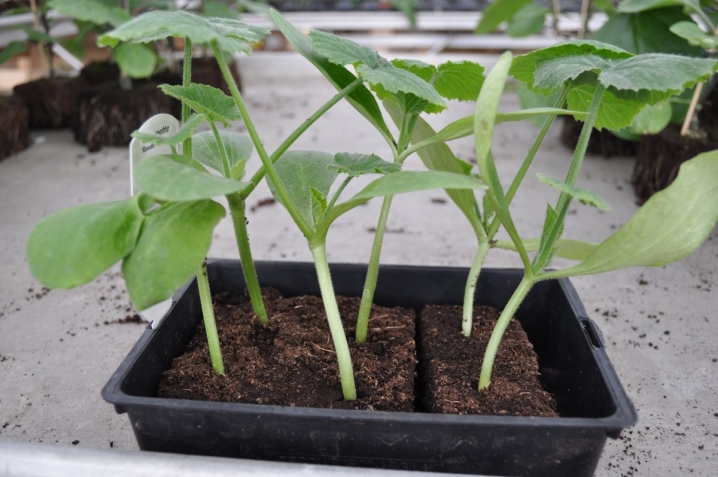
- Individual containers... In order not to pick, plants can be planted in separate cups, pots or special peat containers. Some gardeners even use empty yogurt or juice jars for planting plants. If you grow seedlings in this way, they will be less injured.
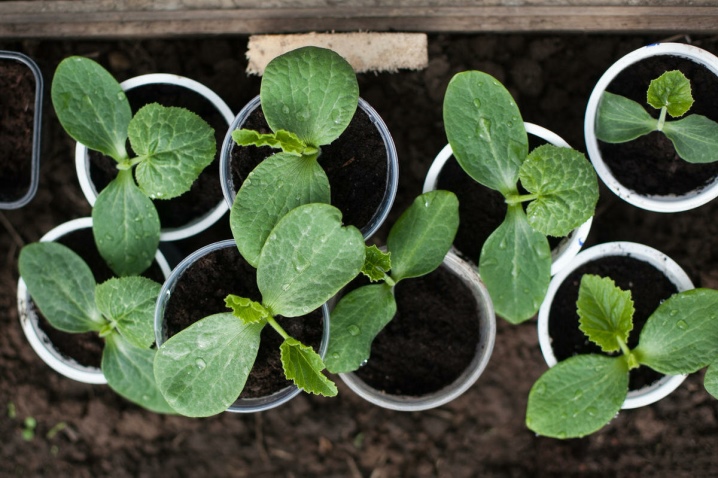
- Paper snails. Another unusual way to grow squash seeds is by using paper snails. For this purpose, you can use a plastic bag and a layer of toilet paper. They are cut into strips 10 centimeters wide and stacked on top of each other. After that, the surface of the paper is sprayed with warm water from a spray bottle. The seeds are spread on a damp base. Then the prepared base is twisted tightly and sent to a container with water. After the first leaves of the plant appear on the surface of the "snail", you need to dive. This usually happens after 3-5 days.
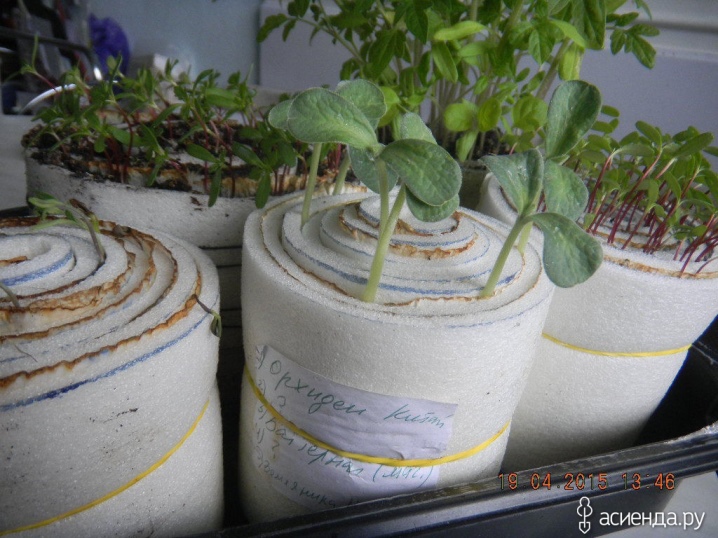
In advance, you need to prepare a nutritious soil. You can either buy soil mixture at a gardening store or prepare it yourself. To prepare the soil, peat must be mixed with humus and nutrient soil in a 2: 1: 1 ratio.
It is also worth adding a small amount of dry sawdust to this mixture. After that, it is important to disinfect it. To do this, it must be spilled with a weak solution of potassium permanganate.
After that, you need to decide on a suitable variety. Novice gardeners should pay attention to those varieties that are popular both in Russia and abroad.
-
"Aeronaut". It is a compact shrub plant. Its fruits are smooth. They are dark green in color. The surface of the fruit is covered with light spots. This variety has a high yield. That is why the plant is very popular among gardeners.You can grow such zucchini both in the open field and in greenhouses.
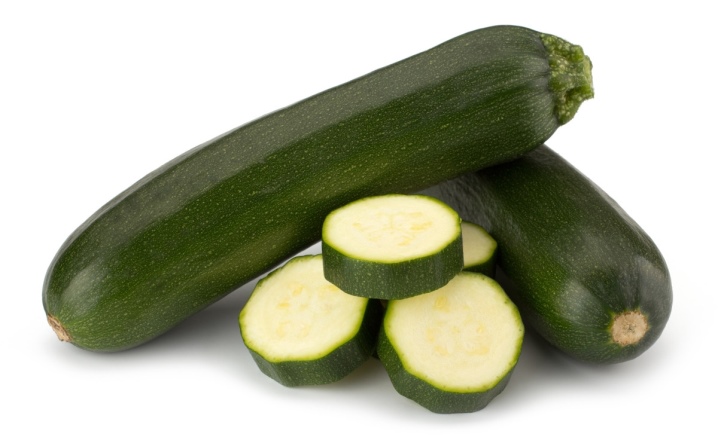
- "White". Most gardeners love this variety for its unpretentiousness. The fruits that appear on the bushes ripen very quickly. They are oval in shape and light in color. They can be used for preparing fresh meals or preserving.

- "Yellow-fruited"... This is an early variety of zucchini. Plants produce yellow cylindrical fruits. They have a pleasant taste. They are also rich in carotene. Therefore, they are often introduced into the diet of children.
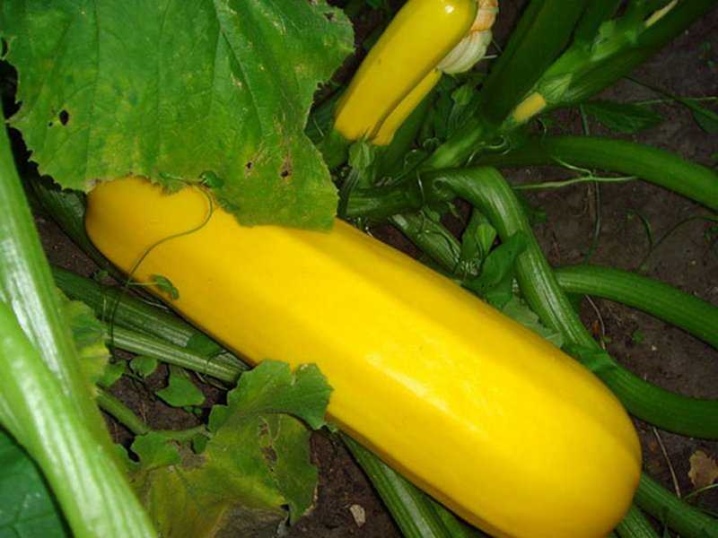
- "Black handsome". Adult squash bushes are compact in size. They can grow in almost any conditions. The fruits stand out for their dark, almost black color. At the same time, their flesh is white and very tender. You can use such fruits both for preservation and for preparing delicious summer dishes.
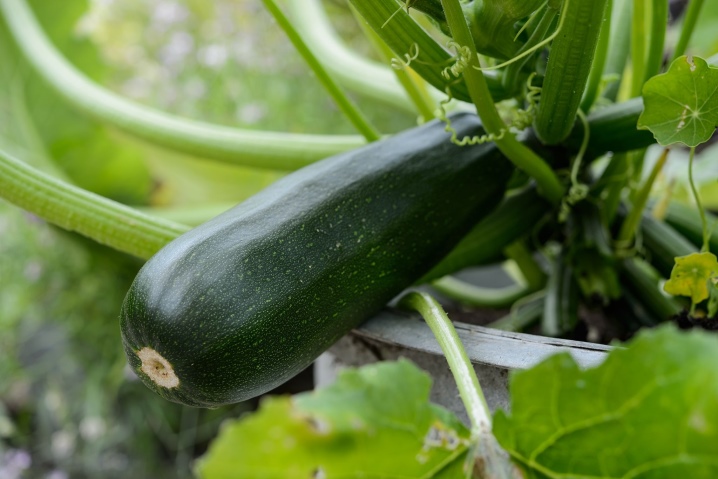
- "Kavili"... It is one of the earliest hybrid marrow varieties. Its fruits are straight, light green. The flesh of these zucchini is very tender. These squash are highly resistant to the most common diseases.
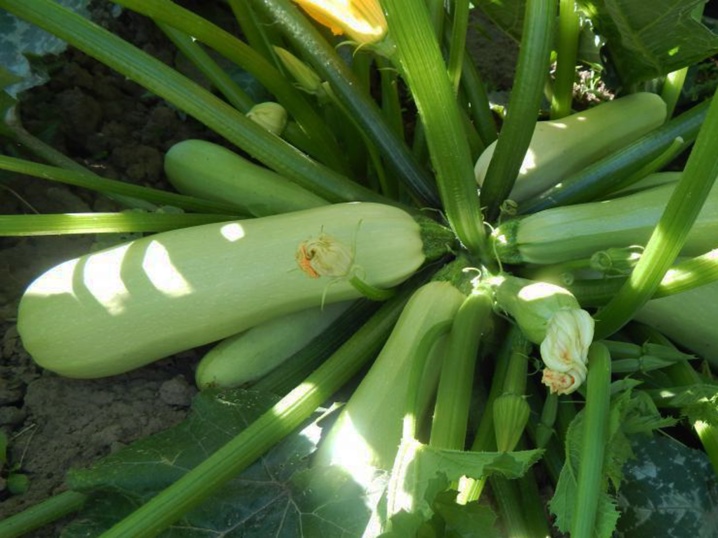
Seeds for sowing also need to be prepared properly. This process consists of several main stages.
-
Calibration... First of all, you need to inspect the planting material and select seeds that look healthy. Do not sow damaged grains. They won't sprout anyway. There should be no dark spots or traces of mold or rot on the seed surface. Healthy grains should be placed in a glass of brine. Seeds that float should also be thrown away. The grains remaining at the bottom must be thoroughly rinsed under running water and then dried.
-
Soak... To make the grains germinate faster, the seeds are soaked in stimulating solutions. You can buy something suitable at any gardening store. Under the influence of such drugs, the strong skin of the squash seeds softens. Therefore, the sprouts appear much faster.
-
Germination... Another good way to speed up seed growth is to germinate them in a damp cloth or gauze. Usually they are left there for 1-3 days. At this time, they should be in a warm room.
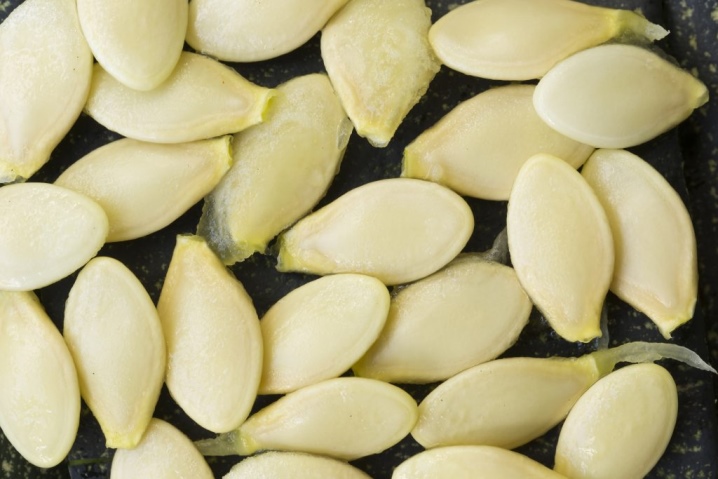
White roots appear on the hatched seeds. Having noticed them, the plants can be planted in the soil.
If purchased seeds are used for planting, they do not need additional preparation. The packages indicate that they have already been pre-processed.
Landing
You should not rush to plant zucchini seeds. If they are sown too early, the seedlings will grow early and will have time to weaken before replanting. In central Russia and in the Moscow region, planting of seeds is usually done in May or April. In the northern regions, these terms are slightly shifted. They begin to prepare seedlings there in the second half of May. When choosing the optimal time for planting seeds, it is worth remembering that at least 20 days must pass before the seedlings are planted in open ground.
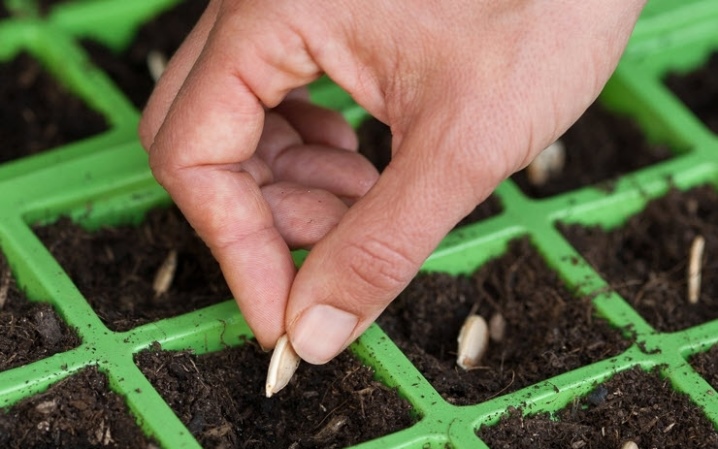
Seeds can be planted in peat pots immediately. But the cups or containers must be pre-treated with a solution of potassium permanganate... In addition, it is worth making small holes in them at the bottom. Next, the containers need to be filled with earth. After that, you can plant seeds in the soil.
You need to make a small depression in the ground. One germinated grain is placed in it. If the seeds were not previously germinated, two seeds are placed in each container. It is not necessary to bury them too much in the soil. This will cause them to germinate for too long. Having covered the seeds with a thin layer of soil, the container must be covered with a transparent film. This will greatly speed up the seed germination process.
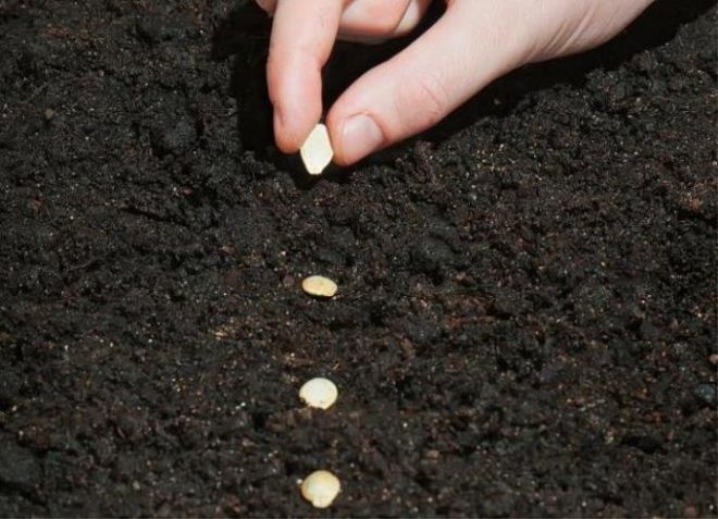
Zucchini seedlings can withstand temperatures up to 25 degrees. Usually, under the right conditions, seedlings appear in a few days.
After germination, the containers must be moved to a bright place. Usually, seedlings in cups or pots are left on the windowsill.
Watering
Zucchini seedlings are very moisture-loving. To grow healthy plants, young seedlings need to be watered regularly. Only warm water is used for this. They pour it at the root. If the water temperature is too low, plant roots can rot. It is not worth overmoistening the plants. This can also lead to root rot.
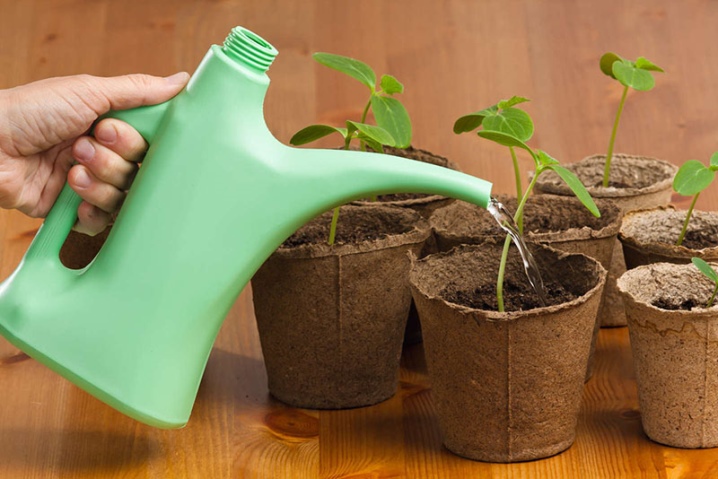
Top dressing
Since young seedlings are actively developing, they need a large amount of nutrients for normal development. Therefore, the seedlings must certainly be fed. Do this two times.
For the first time, fertilizers are applied to the soil after the first shoots appear. At this time, you can process the plantings with organic matter. To do this, the mullein is bred in a ratio of 1 to 10. The resulting solution is watered with young greens. This feeding method has a significant drawback. For a long time, an unpleasant odor emanates from containers with seedlings. Therefore, those who grow zucchini in an apartment or in a house should replace organic fertilizers with purchased ones.
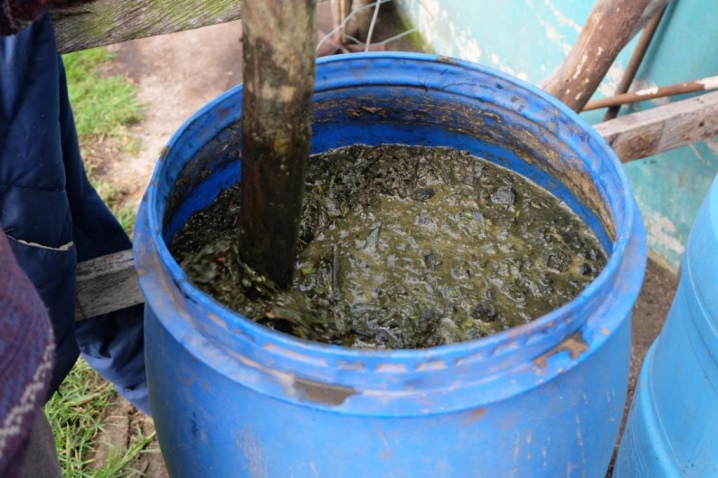
To do this, you can use a tool called "Effect". It is worth feeding the seedlings after watering it with warm water.
After another 10 days, the seedlings are fed a second time. At this stage, you can use mineral fertilizers. In the period between feeding, the containers should be treated with any growth stimulant. If you feed the seedlings correctly, they will grow healthy and strong.
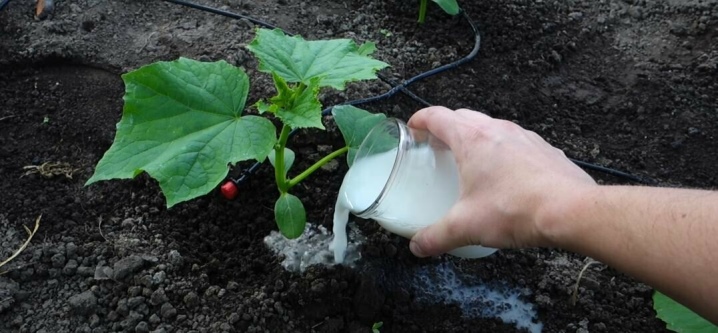
Landing in open ground
Before planting plants in open ground, the plants are hardened. This should be done in the usual way. Containers with young sprouts are simply taken out into the street for several days. At first, the seedlings are left there for a very short time. In the future, the amount of time spent outdoors increases.
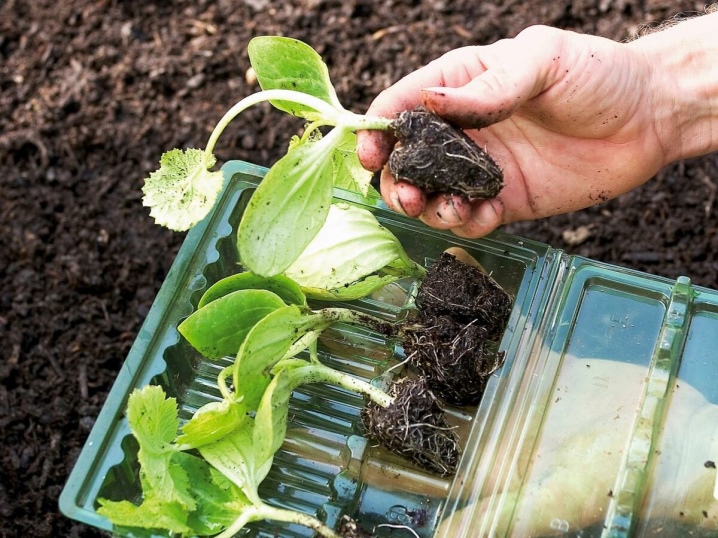
Planting zucchini should be done in the morning or evening. Cloudy days are best for this procedure. The planting process consists of several steps.
-
To begin with, small holes are made in loose, dug soil. They should be located at a fairly large distance from each other.
-
One seedling is placed in each of them.... If the plants were grown in peat pots, they can be buried in the ground along with the seedlings. Such containers decompose quickly. Therefore, they do not interfere with root development.
-
Supporting the stem of the plant, its roots must be carefully covered with earth.... Next, the soil needs to be lightly tamped. Do not bury the roots of the plant too much. If you plant squash seedlings at a greater depth, they will develop more slowly.
-
Next, the plant needs to be watered well. About a liter of water is poured under one plant. If the soil in the area is poor, you can also add a small amount of top dressing to it. It is best to use a mixture of organic and mineral fertilizers.
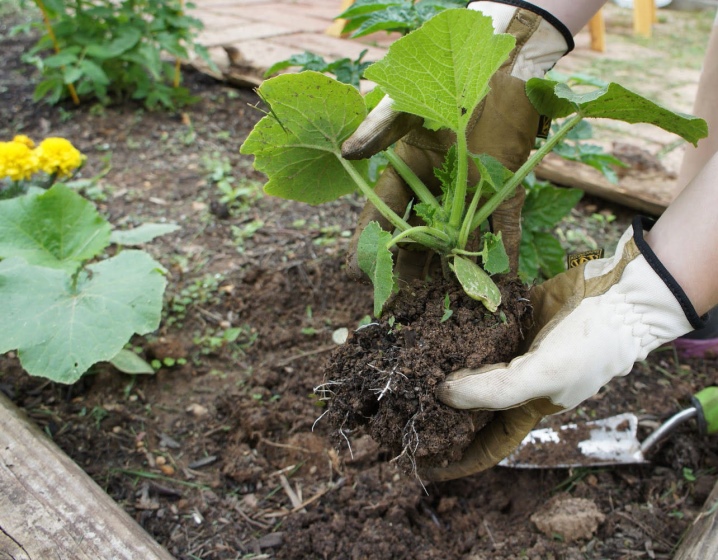
In order for the plants to develop well, they need to be planted on the sunny side of the site. In addition, each seedling should have enough free space for development, because as they mature, the bushes will grow strongly. It is beneficial to plant zucchini next to viburnum, plums or currants. In this case, it is important to ensure that the plants do not shade the young seedlings.
When choosing a place for planting zucchini, it is also worth considering what their "neighbors" will be.
As a rule, young seedlings are placed next to cabbage, potatoes or tomatoes. You can also plant parsley near the vegetable garden.

After planting in open ground, the seedlings also need additional care. You will have to pay attention to the following procedures.
-
Watering... Seedlings transplanted to a permanent place of growth should be watered regularly. You need to pour water at the root. It is important to ensure that the earth is not washed out. The root system should always be covered with a layer of soil. During the fruiting period of plants, it is recommended to increase the frequency of watering. In this case, the zucchini will grow large and tasty.
-
Weeding... To prevent a dry crust from forming on the soil, the plants must be weeded and loosened regularly. If the ground is light and airy, moisture and nutrients will flow to the plants faster. The weeding process also removes all weeds that interfere with the normal development of the squash. Two or three times per season, the bushes must be spud. This is done for the first time after 5 full sheets appear on the plant.
-
Top dressing... To fertilize zucchini, organic fertilizing is usually used. Herbal tea is best suited for this purpose. For its preparation, the barrel is filled with greens by a third. After that, it is poured with warm water. The container with herbs is left in a warm place for a week. During this time, its contents are regularly stirred. Feeding plants grown from seedlings with such products allows you to get a rich harvest of tasty fruits.
-
Treatment of beds... To protect young zucchini from pests and various diseases, a week after transplanting the seedlings, the beds are treated with Karbofos and Bordeaux mixture. This procedure does not harm the crop in any way.
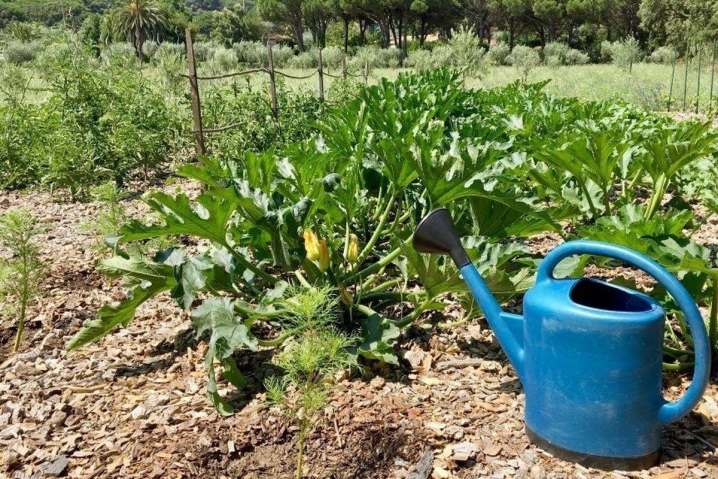
If you do everything right, after a few weeks, large fruits with tasty pulp will appear on the bushes.
Possible problems
In the process of growing marrow seedlings, gardeners often face various problems.
-
The seedlings are outgrowing. Seedlings that are overgrown become pale and weak. This usually happens when the room is too dark. Therefore, it is recommended to leave seedlings in a well-lit room. An increased air temperature can also provoke a rapid pulling out of seedlings. If the seedlings are dramatically elongated, they should be transferred to a cool place. This will benefit the young seedlings.
-
Seedlings bloom ahead of time... If the seeds were sown too early, the seedlings may bloom by the time they are planted. First, small green buds will appear on them. Then the flowers will bloom. If this still happens, the seedlings will have to be planted in the garden in the near future. It is recommended to cut flowers before planting. A couple of days after planting, the seedlings adapt to new conditions and bloom again.
-
Seedlings turn yellow and wither... This is usually due to a lack of nitrogen in the soil. Feeding the plant with urea will help to correct this situation. In some cases, the leaves of young seedlings turn yellow due to improper watering. Therefore, you need to water the plants quite often, using not too cold water for this.
-
The death of seedlings after planting on the site... This is most often due to the fact that the plants were transplanted too early. Zucchini seedlings do not withstand cold weather. If the greens are frozen, it will be impossible to save them. The leaves of young zucchini turn white, the seedlings themselves sink to the ground. After a short time, all seedlings die.
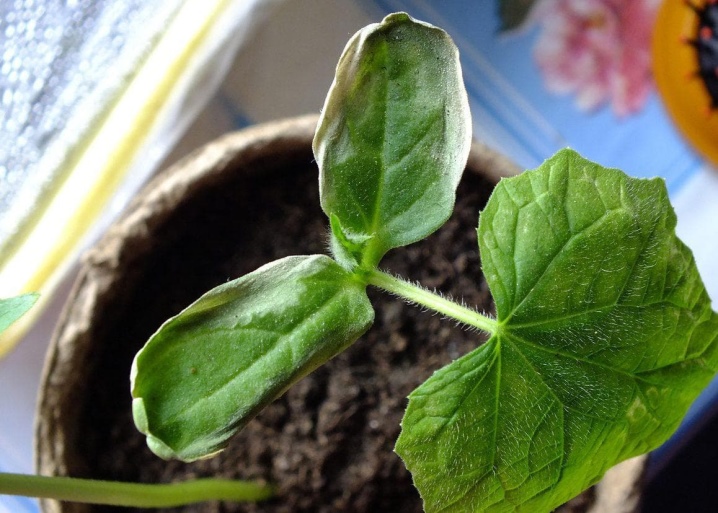
Using these simple tips, any gardener can grow zucchini seedlings.








The comment was sent successfully.